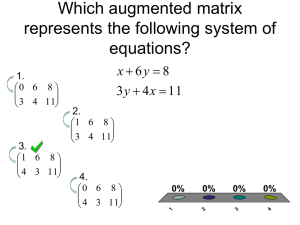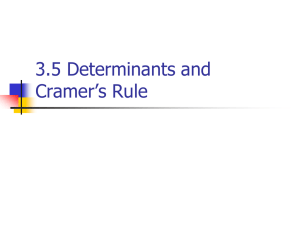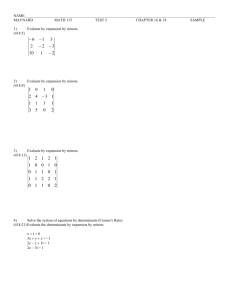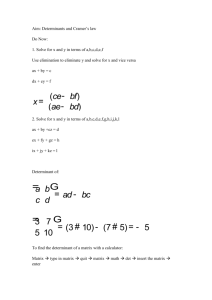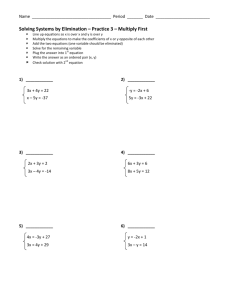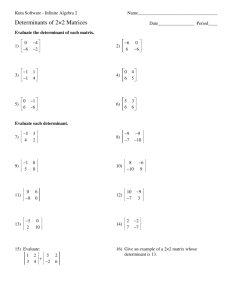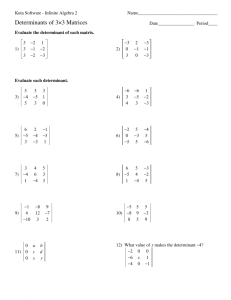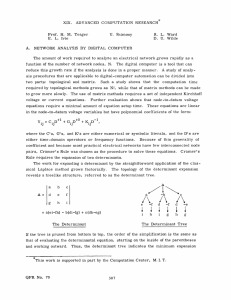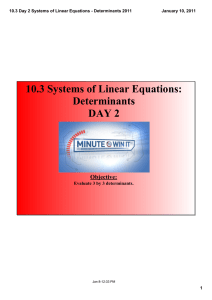Systems of Linear Equations
advertisement
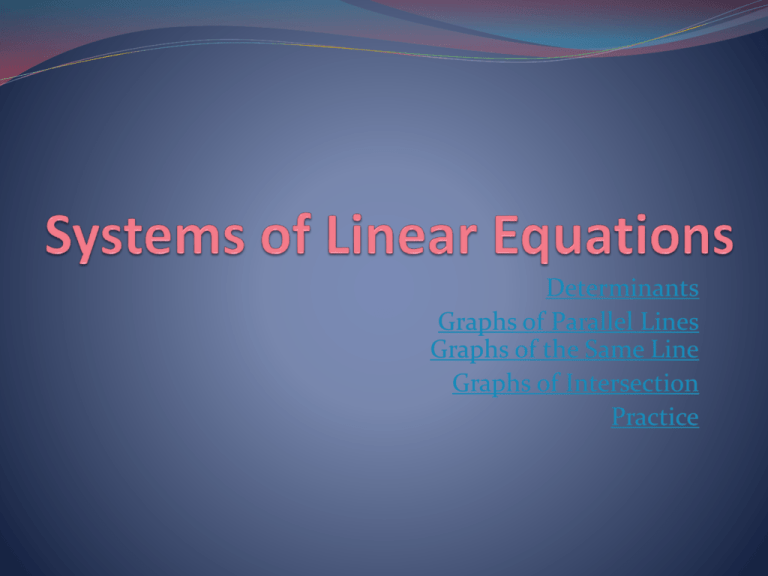
Determinants Graphs of Parallel Lines Graphs of the Same Line Graphs of Intersection Practice Determinants What is the use of the determinant? The determinant tells us if there is no solutions/infinitely many or exactly one solution. Given this system of equations, what is the determinant? ax+by=e cx+dy=f The determinant is a*d – b*c Determinants What is the determinants of the following systems of linear equations? x= -9 -3x=4 -8x+3y=-24 5x+2y=15 4x-5y=-13 6x-7y=-5 x= -9 -3x=4 -8x+3y=-24 5x+2y=15 4x-5y=-13 6x-7y=-5 (-8)*2 – 3*5 = -31 4*(-7) – (-5)*6 = 58 1*0 – (-3)*0 = 0 Determinants Now what does the determinant number mean? IF the determinant (a*d – b*c) is ZERO THEN the system of linear equations has no solution or it has infinitely many. This means that the lines are either PARALLEL or they are the SAME line. IF the determinant (a*d – b*c) is NON-ZERO THEN the system of linear equations has exactly one solution. This means that the two lines intersect! Parallel Lines Parallel lines will have a determinant of ZERO. Take this system of linear equations -6x+3y=9 -12x+6y=-6 (-6)*6 – 3*(-12)= 0 This system is graphed to the right. Same Line Systems of linear equations that are the same line have a determinant of ZERO Take the system, for example. 2x+3y=9 4x+6y=18 2*6 – 3*4 = 0 This system is graphed to the right Intersection Systems of linear equations that intersect have a determinant that is NON-ZERO. Take this system, for example. 4x+6y=-3 6x-2y=2 4*(-2) – 6*6=-44 This system is graphed to the right. Practice: How many solutions? 4x-5y=19 6x+6y=8 4*6 – (-5)*6=54 3x+6y=10 -2x+4y=3 3*4 – 6*(-2)=0 8x-3y=2 2x+7y=9 8*7 – (-3)*2=62 15x-5y=25 5x+20y=47 15*20-(-5)*5=325 Practice: How many solutions? 4x-5y=19 6x+6y=8 No Solutions/Infinitely Many 3x+6y=10 -2x+4y=3 8x-3y=2 2x+7y=9 15x-5y=25 5x+20y=47 Exactly One Solution
